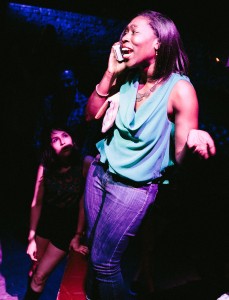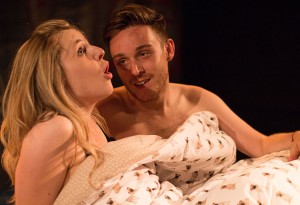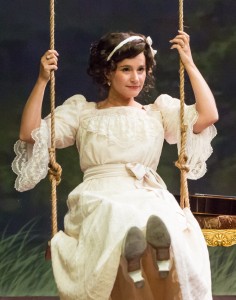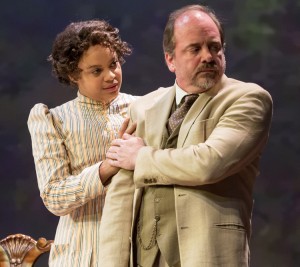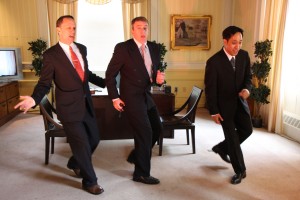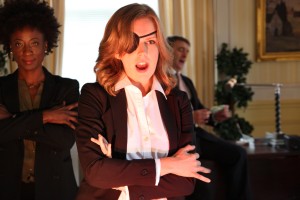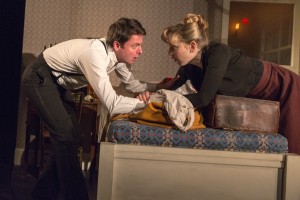Dating in New York City has often been represented in situation and romantic comedies, from On the Town to First Date the Musical, and on TV shows like Sex and the City. In fact, the neuroses and eccentricities of New York singles have provided inexhaustible fodder for playwrights and screenwriters.
Add to this mix director Michael Counts’s immersive theater experience, Play/Date, a collection of 22 one-act plays about the dating scene in the Big Apple. The plays—which stage hookups, breakups, and everything in between—take place simultaneously in an actual nightclub, Fat Baby, on the Lower East Side. This production’s greatest strengths lie in its design: the stimulating lighting by Ryan O'Gara and Marcello Añez’s sexy soundtrack, along with Counts’s staging, create an experience that surrounds the audience. The production’s weakness, however, is an overall inability to convey many honest or original messages about the trials and tribulations of dating in New York City.
Just as any other night at Fat Baby, audience members must wait behind velvet ropes before entering Play/Date. Though the interior of the club is emptier than it would be on a regular night, the rave lights are on, and the bar is open. But the bar is only one of the spaces where these solo and small-cast one-acts take place: various concurrent scenes take place at the tables upstairs, on the dance floor, and in dark enclaves around the club. There is even a series of projections, in which the texts of a character on a cellphone are displayed on the wall behind them.
For the most part, the simultaneity and technique of the short plays are managed impressively well, though there are some moments when it is hard to hear performers. As with many immersive productions, audience members are generally able to roam about and watch any scenario they like; these free-form periods are interspersed with moments when the action comes together in choreographed spectacle. As the plays progress, characters and audience become progressively drunker—for the performers, this means the usual fights, along with regrettable phone calls and lurid meet-ups in bathroom stalls. Because of these simultaneous storylines, one will find it impossible to see everything that Play/Date has to offer in just one visit.
While the physical space of the nightclub is thrilling to explore, and the ensemble is talented and committed, the plays that I encountered do not really say anything new or different about New York City dating. Overall, they mostly redistribute the tired narratives that are already prevalent in television, movies, and theater. Many of the plays overreach in their commentary on technology and its insipid ubiquity through dating websites, social media, and smartphones.
Although there are some unexpected moments involving hand puppets, alien conspiracy, and a random shirtless woman, they are overshadowed by the production's sexiness, reading ultimately as trite rather than meaningful. Overall, there is something more generous to be said about dating in this crazy city, something that these plays are too short and too scattered to capture. Play/Date is worth seeing for its production elements and site-specific location, but do not expect to walk away with an especially nuanced understanding of the New York City dating experience.
Show times for Play/Date are Sunday through Wednesday at 8 p.m. at Fat Baby (112 Rivington St., between Essex and Ludlow streets, on the Lower East Side). Tickets start at $55 for general admission; reserved tables are $75. The new $95 "Friends with Benefits" ticket option includes reserved priority table seating with waiter service, plus an opportunity to fully interact with the performers in specially created scenes that take place at the table. Tickets are available by calling Ovationtix at 866-811-4111 or visiting www.playdateny.com.







